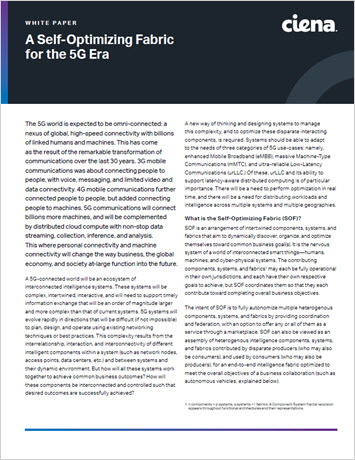A Self-Optimizing Fabric for the 5G Era
The 5G world is expected to be omni-connected: a nexus of global interactive collaboration between cyber physical systems, humans and machine. Antiquated architectures at play in current telecommunications cloud systems, built mainly for human consumption, will be seriously challenged with this vastly heterogenous user landscape. This paper examines how self-optimizing fabrics forming a nervous system for the world of interconnected smart things could help to address key challenges of the 5G era.



